 So you’ve decided to leave the comfort of your couch and venture into the great outdoors, huh? Excellent choice, my friend! No, really. Despite the lack of climate control and surplus of insects, hiking is an incredibly rewarding activity. Why sit and watch yet another episode of “The Office” when you can stand atop a mountain, the wind in your hair, marveling at the masterpiece that is our planet?
So you’ve decided to leave the comfort of your couch and venture into the great outdoors, huh? Excellent choice, my friend! No, really. Despite the lack of climate control and surplus of insects, hiking is an incredibly rewarding activity. Why sit and watch yet another episode of “The Office” when you can stand atop a mountain, the wind in your hair, marveling at the masterpiece that is our planet?
Hiking offers a plethora of benefits – physical fitness, mental well-being, a dose of vitamin D, and the chance to create epic social media posts that’ll make your friends green with envy. Okay, that last one is just a bonus. But whether you’re seeking inner peace, Instagram fame, or simply a break from binge-watching, hiking can deliver.
But before you go traipsing off into the wilderness like a bear seeking honey, let’s ensure you’re well-prepared. This Beginner’s Hiking Guide is designed to equip you, a hiking newbie, with all the knowledge you need to not only survive your first hike but truly enjoy it. After all, ‘winging it’ should be left to birds and improv comedians, not those venturing into the wilderness.
The Art of Choosing Your Hike

Let’s get one thing straight right off the bat: the path to becoming a hiking legend doesn’t start with Mount Everest. It starts with small, manageable trails that are more ‘peaceful walk in the woods’ than ‘epic survival story.’ Beginning with less challenging trails allows you to build up your endurance, familiarize yourself with trail markers, and understand how your body reacts to different terrains. Trust me; it’s more fun to gradually level up than to be the person who had to be carried down the mountain by a Saint Bernard.
Today, thanks to the magic of the internet (and dedicated hiking enthusiasts), finding the perfect trail is easier than ever. Online platforms like AllTrails and TrailLink provide comprehensive lists of trails, including difficulty ratings, distance, elevation gain, and user reviews. It’s like Amazon for hiking trails; only you won’t end up with a shopping cart full of stuff you don’t need. You might even find locals sharing hidden gems that aren’t as crowded as popular routes.
Trail difficulty ratings are kind of like those chili pepper ratings at a Mexican restaurant. Some people can handle the ‘extra spicy,’ while others find the ‘mild’ setting their mouth on fire. Hiking trails are usually rated as easy, moderate, or hard, based on factors like distance, elevation, and terrain. As a beginner, it’s smart to stick with ‘easy’ to ‘moderate’ trails. Remember, there’s no shame in starting slow; even tortoises end up winning races sometimes!
Hiking Equipment 101: No, You Can’t Just Wear Flip-Flops
We’ve all seen the Hollywood movie scenario: the hero is stranded in the wilderness wearing nothing but jeans and a tank top, yet they survive every possible challenge. In reality, those jeans will feel like you’re wearing a wet suit of armor after a rain shower or a sweaty uphill climb. The right clothing can make a huge difference on your hiking experience. Hiking boots or shoes are a must, providing the necessary grip and ankle support, and preventing unwanted ‘rock-in-the-shoe’ situations. Quick-drying, breathable clothes are essential too, along with hats and sunglasses to keep the sun at bay.
Just like in school, the right backpack is crucial. Too small, and you can’t fit anything. Too big, and you’re lugging around extra weight. You need a backpack that is Goldilocks-approved: ‘just right.’ It should be lightweight, comfortable, and have enough space for your gear without making you feel like a pack mule.
Lastly, never leave home without your hiking essentials: a map, a compass, a water bottle, snacks, a first-aid kit, and, if you’re in an area with spotty coverage, a whistle. You might also want to pack a lightweight, rain-proof jacket because, contrary to popular belief, trees don’t make the best umbrellas.
Preparing for the Hike: It’s Not Just About Binge-Watching Bear Grylls
You may have heard that hiking is a walk in the park. Well, think of it as a very long walk in a very big park with occasional steep hills, slippery rocks, and maybe a couple of curious critters. In other words, hiking is like a marathon, not a sprint. Building up your fitness level with regular exercise – like walking, jogging, or yoga – will make your hiking experience much more enjoyable and less ‘I need to lay down now.’ And remember, slow and steady not only wins the race but also gets to enjoy the scenery along the way.
Before you venture into the wild, a little homework can go a long way. No, we’re not suggesting you write a thesis on local flora and fauna, but having a basic understanding of what you might encounter can keep you safe and enhance your experience. Familiarize yourself with local plants (not all berries are snackable), and animals (not all fluffy creatures are friendly). And remember, it’s always better to take pictures of mushrooms for your nature journal than believing they’re the power-up mushrooms from Mario Kart.
Navigation skills are a must when you’re out in the wilderness. And no, GPS doesn’t always count. Learning how to read a map and use a compass could save you from turning a 3-hour hike into an unscheduled overnight adventure. Remember, ‘Up’ is not a direction, and neither is ‘towards the big tree,’ because, in a forest, they’re all big trees.
Let’s Talk Nutrition: Trail Munchies and Hydration
Hiking is not the time to start your new low-carb diet or to test if humans can survive on soda alone. Staying hydrated is essential when you’re trekking through the trails. Water is your best friend – it keeps you cool, helps your muscles work efficiently, and wards off unpleasant things like dehydration and heat stroke. Carry plenty of it, even if you’re only planning a short hike. And remember, just like at a party, it’s better to have more drinks (water, of course!) than run out midway.
Trail munchies are not about packing the contents of your kitchen or making your backpack a portable candy store. Your hiking snacks should be high in energy, easy to carry, and non-perishable. Nuts and seeds, energy bars, peanut butter sandwiches, and fruits like apples and oranges are all excellent choices. Despite the temptation, now’s not the time to try that ‘mega-ultra-giant-sized’ sandwich you saw on a food show. Remember, what goes into your backpack must come out, either as trash or as an extra load to carry.
After a successful hike, your body will need some TLC. Rehydrating and replenishing your energy stores is crucial. A balanced meal with plenty of protein and healthy carbs will do wonders for your recovery. And yes, this might be the perfect time to indulge in that well-deserved ice cream sundae. After all, you’ve earned it!
Hiking Etiquette: How Not to Become the Least Popular Person on the Trail
The wilderness isn’t your personal scribble pad, and carving your name into a tree is definitely not the way to immortality. One of the key principles of hiking is ‘Leave No Trace.’ This means, whatever you bring with you should leave with you, and that includes trash, leftover food, and yes, even the orange peel. Remember, the only thing you should leave behind are footprints, and the only thing you should take are photos (and maybe some fond memories).
Imagine you’re enjoying a quiet evening at home, and suddenly a group of tourists burst in, yelling and taking selfies. Not cool, right? The same goes for wildlife. Observing animals in their natural habitat can be a beautiful experience, but it’s important to respect their space. Don’t approach, feed, or try to selfie with wild animals. Remember, we are guests in their home, so let’s be polite and not turn a peaceful encounter into a dinner bell.
Last but not least, let’s talk trail manners. Hiking trails aren’t race tracks, and there’s no prize for overtaking the most number of people. Always yield to hikers going uphill (they’re having a tougher time) and to those on horseback. Keep your music to yourself – not everyone shares your love for heavy metal or reggae. And if you’re hiking in a group, avoid taking up the whole trail, allowing others to pass. Remember, good trail etiquette is like good karma: what goes around, comes around.
Safety Measures: No, You Can’t Just “Walk It Off”
If a tree falls in the forest and no one is around to hear it, does it make a sound? We don’t know. But if you’re in the forest and you get hurt, it’s definitely a sound everyone should hear. Informing someone about your hiking plans can ensure that help arrives if you need it. Always tell a friend or family member where you’re going and when you plan to return. This isn’t just for potential ‘I Survived’ TV show applicants – it’s an essential safety measure for every hiker.
Even if you’ve packed your first aid kit with the diligence of a surgeon, knowing how to use it is key. Basic first aid knowledge can make a difference in case of minor injuries or unexpected incidents. It’s not about becoming the next Grey’s Anatomy character, but knowing how to treat a sprain, a cut, or identify signs of heat stroke can be a real game-changer. Plus, the ability to bandage a knee is way more impressive than any party trick.
Weather can be an unpredictable beast, much like the ending of a good book or your favorite sports game. Always check the weather forecast before setting off, and be prepared for sudden changes. Remember, storms don’t always give an RSVP before crashing the party, and the ‘it’s just a drizzle’ mentality can quickly escalate into a soaked-through-your-clothes scenario.
Lastly, it’s essential to know when to call it quits. Turning back isn’t a sign of defeat; it’s a sign of wisdom. If you’re feeling excessively tired, the weather turns foul, or the trail becomes too challenging, there’s no shame in deciding to try again another day. Remember, the mountain isn’t going anywhere (unless you’re in a sci-fi movie), and it’s always better to hike another day than to push beyond your limits.
Conclusion
So, there you have it – the novice hiker’s guide to embarking on your first outdoor adventure without ending up a sitcom punchline. While hiking can seem a bit daunting to beginners, remember that every experienced hiker was once in your shoes… hopefully, not your flip-flops.
Embrace the journey as much as the destination. There might be some hiccups along the way, and that’s okay. Mistakes are part of the learning process, and they’ll provide some great stories for your next dinner party.
In the words of a wise hobbit, ‘It’s a dangerous business, going out your door. You step onto the road, and if you don’t keep your feet, there’s no knowing where you might be swept off to.’ But with this guide in your back pocket and a sense of adventure in your heart, you’re ready to step out the door and onto the trail. And who knows? You might just be swept off to somewhere amazing.
So grab your boots, your map, and your trail munchies, and get ready to dive into the world of hiking. Here’s to new adventures, stunning views, and the joy of discovering that you are, indeed, a natural-born hiker! Now, go forth and hike… like everyone’s watching and are super impressed.
Resources
While this guide serves as a solid introduction to hiking, there’s a vast universe of knowledge out there. If you’re interested in diving deeper (or climbing higher?), here are some resources to fuel your journey:
- Books: ‘A Walk in the Woods’ by Bill Bryson for a humorous and insightful memoir of hiking the Appalachian Trail, or ‘The Complete Idiot’s Guide to Hiking’ by Jason Stevenson for a more detailed how-to guide.
- Online Platforms: Websites like AllTrails, Hiking Project, and TrailLink offer a wealth of information on trails across the country (and the world).
- Local Hiking Clubs: Joining a local hiking club can be a great way to learn from more experienced hikers and find hiking buddies.
- Social Media: Hiking forums and social media groups can be a treasure trove of advice, recommendations, and inspiration. Check out communities like /r/hiking on Reddit or join hiking groups on Facebook.
- Outdoor Stores: Staff at outdoor equipment stores can provide advice on gear and often have knowledge about local trails.
Remember, the more you know, the more enjoyable (and safe) your hiking experience will be. Happy trails!
Disclaimer: The tips and advice mentioned in this guide are general suggestions and do not replace professional advice. Always follow local regulations and guidelines while hiking, and consult with a healthcare professional before starting any new physical activity. Stay safe out there!


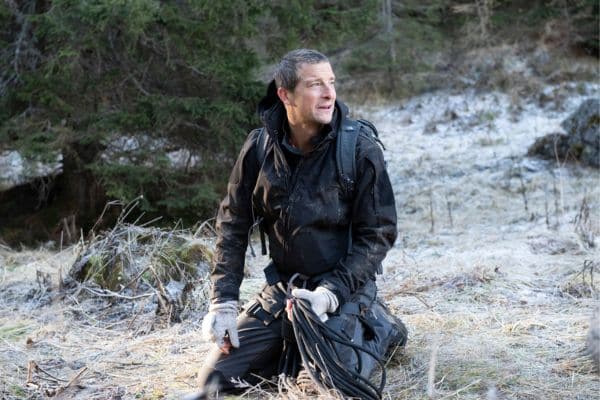

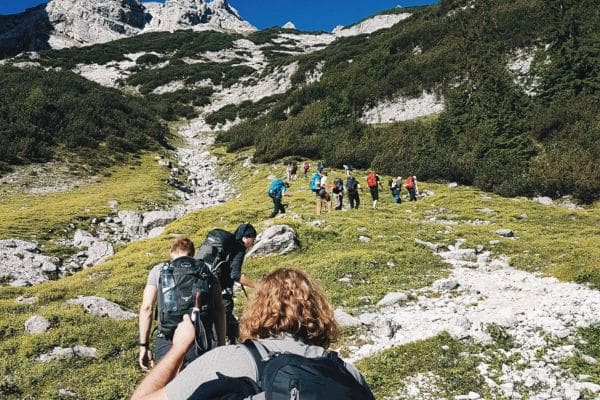

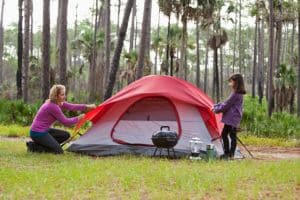
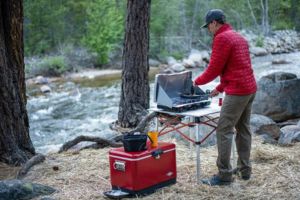
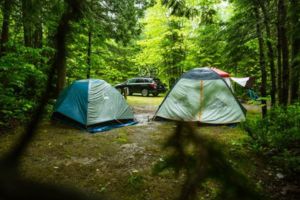
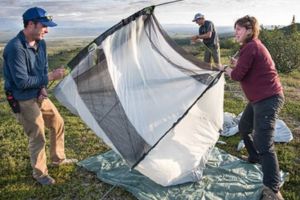
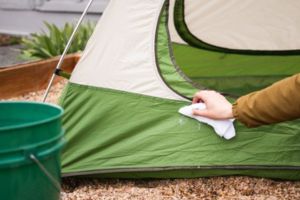

Leave A Comment